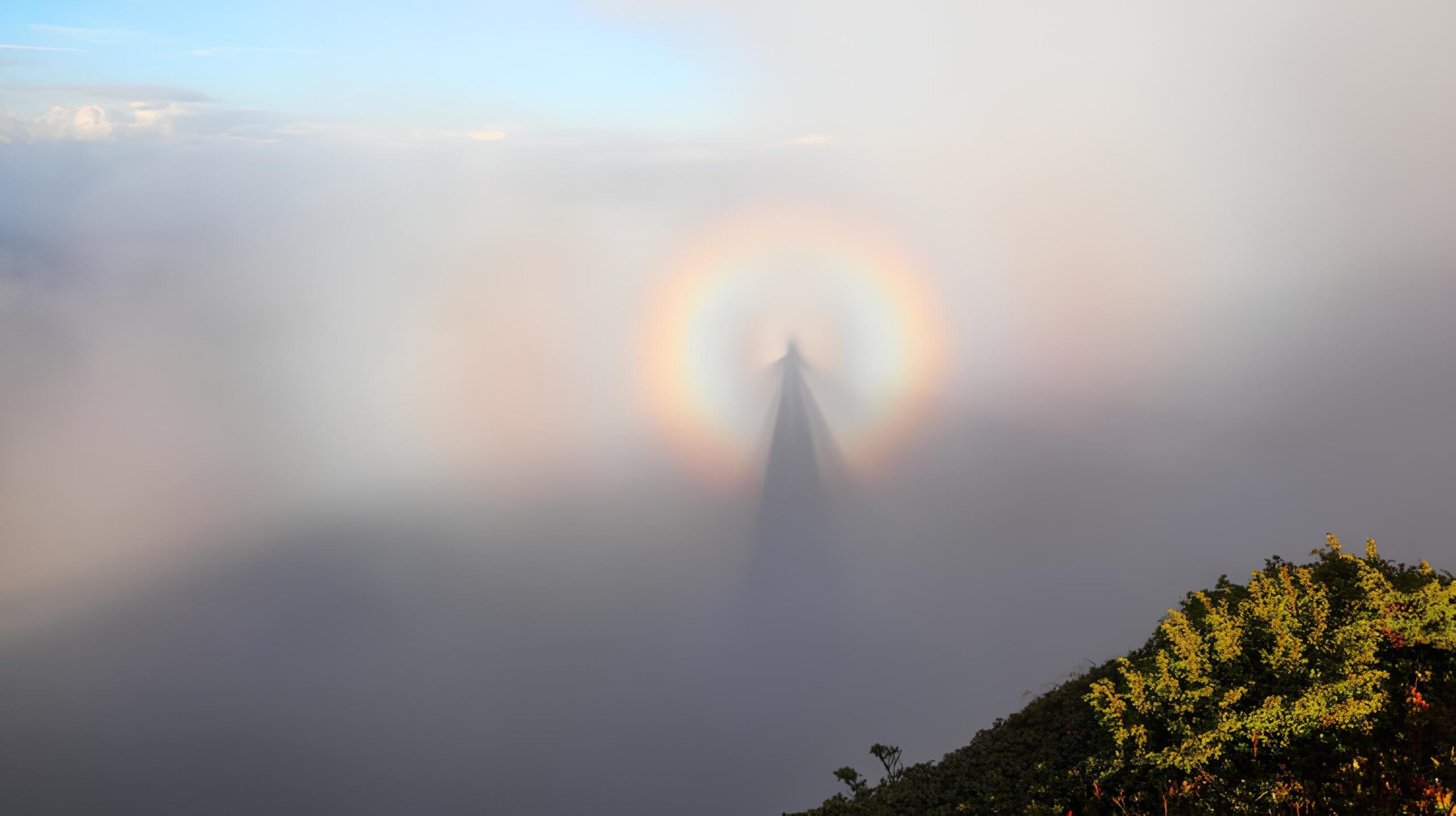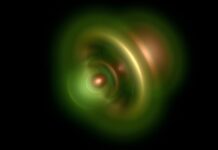The phenomenon is sometimes called as a “mountain spectre” because it most usually occurs when an observer stands at a higher elevation on a mountain and sees their shadow projected on a cloud at a lower elevation.
A Brocken spectre, on the other hand, can appear in any situation when an observer’s magnified (and seemingly massive) shadow is projected in mid-air against any sort of cloud opposite a bright light source.

Furthermore, if the cloud is made up of backscattered water droplets, a glory resembling a saint’s halo can be seen about the observer’s head, formed by the droplets reacting with sunlight or (rarely) moonlight. The glory is composed of one or more concentric, dimmer rings that are invariably red on the outside and bluish in the middle. Because of its appearance, the phenomena is occasionally confused for a circular rainbow, but the latter is far bigger in diameter and the consequence of separate physical processes.
The photograph below displays a Brocken spectre in action (the Sun is behind the observer’s head).

An optical illusion arises when an observer considers their shadow on relatively nearby clouds to be at the same distance as distant land objects seen through gaps in the clouds, or when there are no reference points to help judge its actual size.
The term comes from a local tale about the Brocken, a summit in Germany’s Harz highlands where regular fogs and low-altitude access allow it to occur frequently. Giant shadows that seemed to move on their own due to cloud layer movement (which is also a definition of a Brocken spectre) and were surrounded by glories may have contributed to the Harz mountains’ reputation as a land of witches and evil spirits, as reflected in the region’s literature.

To include a glory, the clouds or fog responsible for the occurrence must be placed beneath the viewer, in a direct line with the Sun’s/Moon’s location in the sky and the observer’s eye.
As a result, as illustrated above, the splendour is typically observed from a high vantage point, such as a mountain, tall structure, or flying airplane. In the latter situation, if the plane is flying low enough for its shadow to be visible on the clouds, the glory always surrounds it. ‘The Glory of the Pilot’ is the name given to this phenomena.







